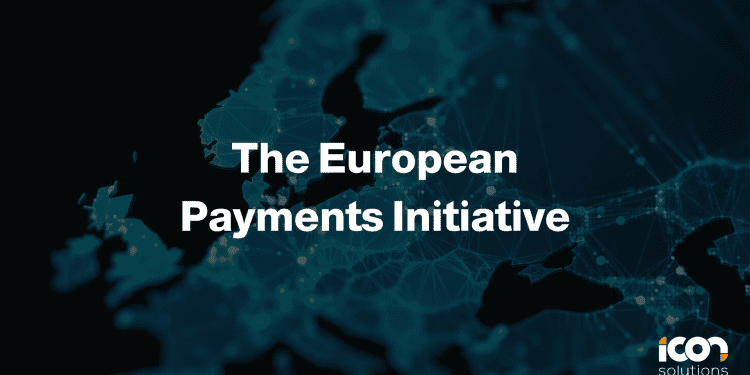In July 2020, a group of sixteen major European banks from five Euro countries announced the launch of the European Payments Initiative (EPI) with the aim to create a unified payment solution for consumers and merchants across Europe.
EPI’s stated long-term ambition is to become a new standard means of payment for all transaction types. This includes in-store, online, cash withdrawal and person to person (P2P), and as an alternative to existing international payment scheme solutions.
It is fair to say that EPI has been met with a degree of pessimism, given the scale of the project and Europe’s history of similar, failed initiatives. But the benefits that EPI can potentially deliver means this time round really could be different, although fundamental questions remain.
What makes EPI different?
The main difference between EPI and previous attempts such as Monnet is that, for several reasons, political and industry support is far greater this time around.
Firstly, EPI makes increasing sense from a global competition standpoint. The major cross-border retail payments infrastructures used by European consumers are US-owned, which has caught the eye of European regulators. And as banks’ interaction with their customers is gradually eroding due to PSD2 and new players entering the payments ecosystem, EPI provides an opportunity to reclaim lost ground.
In addition, the European payments market remains hugely fragmented (despite major efforts from the industry in realizing SEPA). The dominance of the US card networks reflects the historical focus of European payment innovation towards national or regional solutions. But in today’s globalised world, these solutions have too few economies of scale to compete successfully with the US networks and keep up with market innovation. As Europe remains a very cash-heavy economy, EPI represents an opportunity to convert a large portion of these cash transactions and realise a good degree of scale.
5 big questions that EPI must answer
Despite the potential promise of EPI, more information is urgently required. Here are five key questions that need to be addressed:
1. What is the Target Operating Model?
The European payments industry is still in the process of delivering Open Banking and PSD2. It has also seen unprecedented adoption of digital payments due to Covid-19. Within this context, much more clarity is needed on what EPI aims to achieve in the long run.
For example, will EPI support both in-store and online payments? Will it enable Open Banking based payment initiation? Where does request to pay fit into the roadmap? A clear blueprint is required so that industry stakeholders can prepare and assess the viability of offering EPI functionality.
2. How will EPI meet pan-European payment requirements?
There are some fundamental cultural differences that will need to be addressed for EPI to work on a pan-European level. Consider that French consumers cannot imagine making a payment without the option of a chargeback. But for the Dutch, it has been normal for years to conduct e-commerce transactions without chargebacks.
As these different payment trends and preferences are reflected across all European territories, EPI must develop a plan to update scheme rules and procedures as banks from new markets come on stream to meet specific requirements, while ensuring wider interoperability
3. How will EPI interoperate (or not)?
Many European banks will continue to rely on the US card networks after the launch of EPI. Yet it is not clear whether EPI plans to partner with the networks. Additionally, whether EPI intends to offer card usage internationally must be clarified.
Due to the political and sovereignty foundations of EPI, if EPI has its own brand identity, it will also be interesting to see whether EPI plans to scale digital services within US-based wallets such as Apple Pay and Google Pay and allow digital cards to be integrated.
4. How does EPI plan to incentivize migration?
A payments system is only beneficial if there is a critical mass of users. If EPI is not mandated, there must be a plan to incentivise the likes of Cartes Bancaires, iDeal and other prominent, popular local networks to migrate to EPI. This means that for EPI to work, there may need to be sacrifices that will be hard to swallow. Alternatively, the intention may be for EPI to become another layer of technical infrastructure.
5. Does digital currency feature on the EPI roadmap?
With a blank slate comes the opportunity to ensure a futureproof system. However, this presents its own challenges. EPI must consider where digital currencies feature in the future landscape of the network and start taking steps to address the impact of ‘known innovations’ such as the digital Euro.
The future of European payments: Bigger thinking required
In summary, EPI could potentially provide a bedrock for future European payments innovation. But rather than being too ambitious, it arguably does not go far enough. Although public information is limited, it seems EPI will focus largely on existing payment types (e.g. cards and wallets), and has few ambitions with regard to major, innovative improvements for European consumers and merchants.
EPI should aim for loftier heights rather than merely creating a European card network or wallet proposition. A comprehensive industry engagement plan, including how the supply-side of the market, merchants, and consumer groups can participate, would be greatly received. This would help create a truly forward-looking platform for European payments, fit for the next 50+ years.











